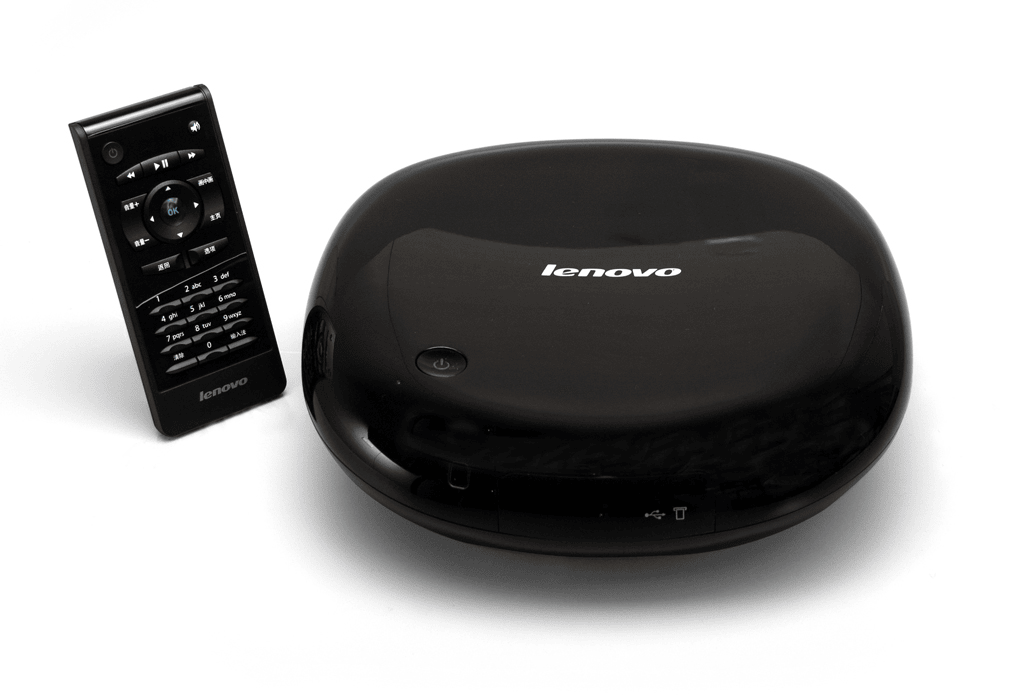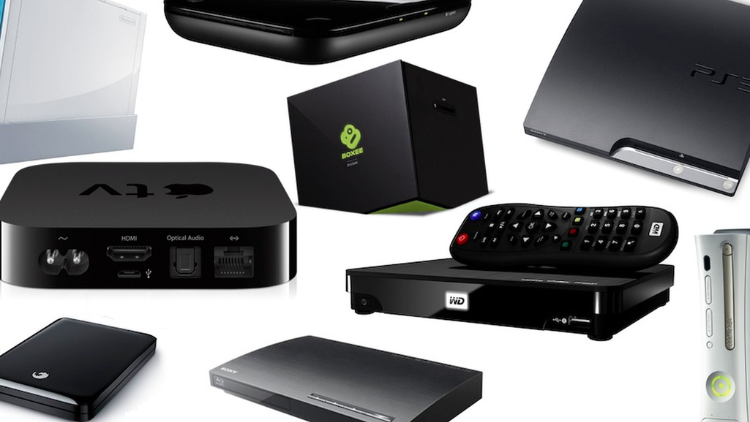What is Set Top Box? Types

What is STB?
STB (Set-Top Box) is a small box or device that connects to your TV. It acts like a "magic box" for your TV, allowing you to watch more and different programs and content.
You can think of an STB as a bridge between your TV and the Internet. By connecting to the Internet, the STB can receive TV programs and videos from a variety of sources. It allows you to watch live TV programs, on-demand movies, TV shows, and other online videos, as well as allowing you to browse video platforms like YouTube.
STBs usually have a lot of different features, such as you can subscribe to TV programs and channels through it, or you can use it to make a video call to a friend's STB at home. In short, STBs provide you with more options and conveniences to make your TV viewing experience more colorful.
Components and features of Set-Top Box
A typical STB consists of several components and features that enable its functionality:
- Tuner: The tuner is responsible for receiving the television signals from the broadcasting network. It can be a cable tuner, satellite tuner, or an IP tuner, depending on the type of STB and the source of the signals.
- Decoder: The decoder is an essential component of the STB that converts the digital signals into a format that can be understood by the television set. It decodes the compressed audio and video data and renders it on the screen.
- User Interface: The STB usually includes a user interface that allows users to navigate through the available channels, services, and settings. It can be in the form of menus, on-screen displays, or electronic program guides (EPGs).
- Connectivity: STBs often have various connectivity options, such as HDMI, USB, Ethernet, or Wi-Fi, to connect to other devices or networks. These connections enable features like streaming content, accessing online services, or connecting external storage devices.
- Recording and Time-Shifting: Many STBs have built-in storage capabilities, allowing users to record their favorite TV shows and movies. Time-shifting features enable users to pause, rewind, or fast-forward live broadcasts.
- Interactive Features: STBs can provide interactive features such as video-on-demand (VOD), catch-up TV, gaming, and applications. These features enhance the user experience and provide additional entertainment options.
STBs have evolved over time, incorporating new technologies and features to meet the demands of the digital entertainment era. They continue to play a crucial role in delivering high-quality content, expanding viewing options, and enhancing the overall television experience.
Types of STB

Satellite STB
Satellite STBs are used to receive television signals from satellite broadcasting providers. They are commonly used in areas where cable TV infrastructure is limited or unavailable. Satellite STBs receive signals from satellites in geostationary orbit, allowing users to access a diverse range of channels and services. These STBs are equipped with a satellite dish to receive the signals and a decoder to convert them into a format compatible with the connected TV. Satellite STBs often provide features such as high-definition (HD) and even ultra-high-definition (UHD) content, interactive services, and the ability to record and pause live broadcasts.
Cable STB
Cable STBs are designed to receive television signals through cable television networks. They are commonly used by cable TV subscribers to access a wide range of channels and services provided by cable operators. Cable STBs are connected to the cable TV network via a coaxial cable, and they decode and display the digital signals on the connected television set. They often offer features such as on-demand content, interactive services, and the ability to browse and select channels from the cable operator’s lineup.
IPTV STB
IPTV (Internet Protocol Television) STBs are used to receive television signals over IP networks, typically provided by internet service providers (ISPs). These STBs are connected to the internet and receive television content in the form of IP packets. IPTV STBs decode the IP packets and display the content on the connected TV. They often provide features such as video-on-demand (VOD), catch-up TV, interactive applications, and the ability to access streaming services. IPTV STBs offer flexibility in terms of content delivery and often allow users to customize their channel lineup and access online content and services.
Each type of STB caters to specific broadcasting technologies and offers unique features and functionalities. Whether it’s cable, satellite, or IPTV, the choice of STB depends on the availability of broadcasting services in a particular area and the preferences of the user in terms of channels, services, and interactive capabilities.
Why choose STB?
Set-Top Box offers a range of functions and benefits, providing users with diverse and personalized TV experiences.
TV signal reception and decoding:
STB is capable of receiving and decoding television signals, ensuring that audio and video content is displayed correctly on the TV, providing a high-quality viewing experience.
Access to digital content and services:
STB provides users with the ability to access a wide range of digital content and services. Users can enjoy diverse channel selections, including local and international broadcasts. STB also offers video-on-demand services, allowing users to stream movies, TV shows, and other on-demand content. Additionally, STB often provides interactive services such as electronic program guides, catch-up viewing, gaming, and online content platforms.
Enhanced user experience and interactivity:
STB enhances the overall user experience by offering various interactive features and functions. Through electronic program guides, users can easily browse available channels and program schedules, making it convenient to find and select desired content. STB also supports interactive applications and services, providing gaming, social media integration, and personalized recommendations. These interactive features add depth and engagement to the viewing experience, making TV viewing more than just a passive activity.
Recording and time-shifting capabilities:
Many STBs come equipped with recording and time-shifting capabilities, allowing users to record their favorite TV shows, movies, or sports events for later viewing. Time-shifting features enable users to pause, fast-forward, or rewind live broadcasts, ensuring they don’t miss any important moments. These recording and time-shifting capabilities provide flexibility and convenience, allowing users to watch content at their preferred time.
ATV IPTV Tips: It is important to note that STB does not come with its own channel content. It relies on a connection established with the TV service provider, through which the channel content is acquired and transmitted. Users can choose the appropriate IPTV subscription according to their needs and preferences, and access the required channel content through STBS.
Don’t have the right IPTV subscription? ATV IPTV will help you find the right IPTV service.
Evolution of STB

The evolution of Set-Top Boxes (STBs) has been remarkable, with continuous advancements and improvements in technology over the years. Let’s explore the key stages in the evolution of STBs:
- Basic Cable and Satellite STBs: The early stages of STBs were focused on basic cable and satellite reception. These STBs were designed to receive analog signals and provide basic functionalities such as channel tuning, volume control, and limited interactive features.
- Digital STBs: The transition from analog to digital television broadcasting led to the development of digital STBs. These STBs were equipped with the capability to receive and decode digital signals, providing better picture and sound quality. Digital STBs also introduced new features like electronic program guides (EPGs) for easy channel navigation and improved user interfaces.
- Interactive and Internet-Connected STBs: As internet connectivity became more prevalent, STBs started incorporating internet capabilities. These advanced STBs allowed users to access online content, streaming services, and interactive applications. Users could browse the web, stream videos, play games, and access social media platforms directly from their STBs, transforming them into multimedia entertainment hubs.
- High-Definition (HD) and Ultra HD STBs: With the advent of high-definition television, STBs evolved to support HD content. HD STBs provided enhanced picture quality and introduced features like HDMI connectivity for seamless HD viewing. Furthermore, the emergence of Ultra HD (4K) content led to the development of Ultra HD STBs, capable of delivering stunning visuals with increased resolution and color depth.
- Hybrid and IP-Based STBs: Hybrid STBs combine traditional broadcasting technologies, such as cable or satellite, with internet protocol (IP) delivery. These STBs offer a hybrid approach, allowing users to access both traditional broadcast channels and IP-based services like IPTV. Hybrid STBs provide a seamless integration of different content sources, offering users a broader range of entertainment options.
- Smart STBs: The latest evolution in STBs is the introduction of smart features. Smart STBs combine traditional STB functionalities with advanced smart TV capabilities. These STBs have built-in app stores, support for popular streaming services, voice control, and integration with smart home devices. Smart STBs enable users to access a wide range of digital content and services while enjoying the convenience of a smart TV experience.
What are the advantages of using STB?
Set-top boxes (STBs) offer a range of features that enhance the TV viewing experience. The following are some common features found in STBs:
- Channel selection and navigation: Set-top boxes provide an intuitive user interface to navigate and select channels. Users can browse channels, view program descriptions, and schedule recordings directly from the tv guide.
- Time shifting and recording: Time shifting allows users to pause, rewind or fast forward live TV. Users can also schedule and record their favorite shows to ensure they don’t miss their favorite content.
- Connectivity options: The set-top box offers a variety of connectivity options to enhance its functionality. HDMI ports and USB ports are available.
- Multimedia playback: Some advanced set-top boxes support multimedia playback, allowing users to play media files, such as videos, music and photos, directly from a USB drive or network storage.
- Parental controls: Set-top boxes often include parental controls that allow parents to manage and restrict the content their children can access, ensuring a safe viewing environment for young viewers.
- System updates and firmware upgrades: These updates improve performance, enhance functionality, and introduce new features to the set-top box.
These features help enable a more interactive, personalized and versatile TV viewing experience, making the set-top box a valuable addition to your home entertainment system.
Disadvantages of STB:
- Price and Subscription Fees: The cost of purchasing an STB and the associated subscription fees can be a disadvantage. In addition to the upfront cost of the STB device itself, users need to pay subscription fees to the TV service provider, which can increase monthly expenses.
- Dependency on Service Providers: Using an STB requires establishing a connection with a TV service provider, and users typically need to subscribe to specific services to access channels and content. This means users are dependent on the service provider and must adhere to their policies and regulations.
- Technological Limitations: The functionality and performance of STBs are subject to technological limitations. Some STBs may not have sufficient processing power to support advanced features or may be incompatible with certain emerging technologies and standards.
- Interface and User Experience: The user interface and operating methods of STBs may vary depending on the brand and model, and some users may find it unfamiliar or challenging to use.
Overall, while STBs offer numerous benefits, including expanded channel selection, interactive features, and enhanced viewing experiences, they also have drawbacks such as costs, dependency on service providers, technological limitations, and potential usability issues. It’s important for users to consider these factors when deciding to use an STB.
Things to note when purchasing STB
When purchasing a set-top box, users should consider factors such as suitability, functionality, channel selection, content and services, user interface, technical requirements, brand and reputation, price, and warranty. By considering these issues comprehensively, users can make informed purchasing decisions and choose a set-top box that meets their needs and budget.
- Suitability: Ensure that the purchased set-top box is compatible with the user’s television and home entertainment devices. Understand the connectivity options of the set-top box (such as HDMI) and the supported signal types (analog, digital, high-definition).
- Technical requirements: Confirm whether the home network and internet connection meet the technical requirements of the set-top box. Stable internet connectivity and sufficient bandwidth are particularly important for set-top boxes that provide online streaming or interactive services.
- Brand and reputation: Consider the reputation and reputation of the set-top box brand. Understanding information about the manufacturer’s reputation, product quality, and after-sales service can help users make more informed purchasing decisions.
- Price and warranty: Take into account the price and performance of the set-top box and check if there is an appropriate warranty policy. Balance budget and performance requirements to choose the most suitable set-top box.
- User feedback and reviews: Read feedback and reviews from other users to understand their experiences and opinions on specific set-top boxes. This can provide valuable information about product quality and reliability.
- Service provider considerations: If the set-top box requires a subscription to a TV service provider, users should research and compare different providers. Factors to consider include reputation, customer support, price, and availability of desired channels and services.
- Future compatibility and updates: Users should inquire about software updates and firmware upgrades for the set-top box. It is important to know if the manufacturer regularly releases updates to enhance functionality, introduce new features, and address security vulnerabilities.
Related:
- How to Clear Cache on Firestick
- How to reset Firestick Remote?
- How to Fix IPTV Buffering?
- How to Jailbreak a Firestick?
- What is a M3U Playlist?
- Developer Options on Firestick
FAQ
How to set TV remote control to control set-top box?
To experience the convenience of controlling both your TV and Set-Top Box (STB) simultaneously, you can program your TV remote. Here’s how to set it up: Press and hold the STB button, then enter the corresponding code while continuing to hold the STB button.
What is STB on my TV?
A set Top Box (STB) is an electronic device, similar in size and shape to a VCR, that tunes into, receives and decodes HDTV signals. HDTV signals can come from over-the-air broadcasts, digital satellite, or digital cable.
Do you need a STB with a smart TV?
Does a smart TV need a cable box or broadband? If you want to continue receiving the same channels you have, then the answer is yes: You still need a cable or satellite box, because no other option will deliver the same channels and stations in the same way.
What is the newest fios set-top box
Verizon FiOS TV One.
What is stb in IPTV?
In an IPTV network, a Set-Top Box (STB) is a small computer device. It plays an important role on the IP network by providing two-way communication and decoding video streaming.
By connecting to the television, the STB receives video streams from the IPTV service provider over the IP network and decodes them into playable video content on the TV.
The STB also has the capability to communicate bidirectionally with the IPTV service over the network, allowing it to receive instructions, send feedback, or fetch additional information.
This enables users to access TV programs, video-on-demand, electronic program guides, and other features through the STB while interacting with the IPTV service. In summary, the STB serves as a crucial component for video decoding and two-way communication in an IPTV network.
Why do you need a set-top box for your TV?
Android TV box is basically a set-top box. It allows users to watch on-demand videos, video content sites, play games, and watch regular network shows on the big screen. All you need is a good internet connection and a TV that supports Android operating system
Why is it called set top box?
A device that converts video content to analog or digital TV signals. For years, the set-top box (STB) was the cable box that "sat on top" of the TV. Although no more flat surface to rest anything, the term lives on.
Conclusion
Q: Paid, Where to find subscription code?
A:Login, MY ACCOUNT-My Orders-View Order-SKU/IPTV CODE Or Check mail/spam box, code is also sent automatically. Or contact us by email.
Q:Why the code wrong not work?
A: Pls fill in the correct code. Or check whether install correct apk, there are two version: Normal (Blue)&Plus (Red).
Leave a Message


